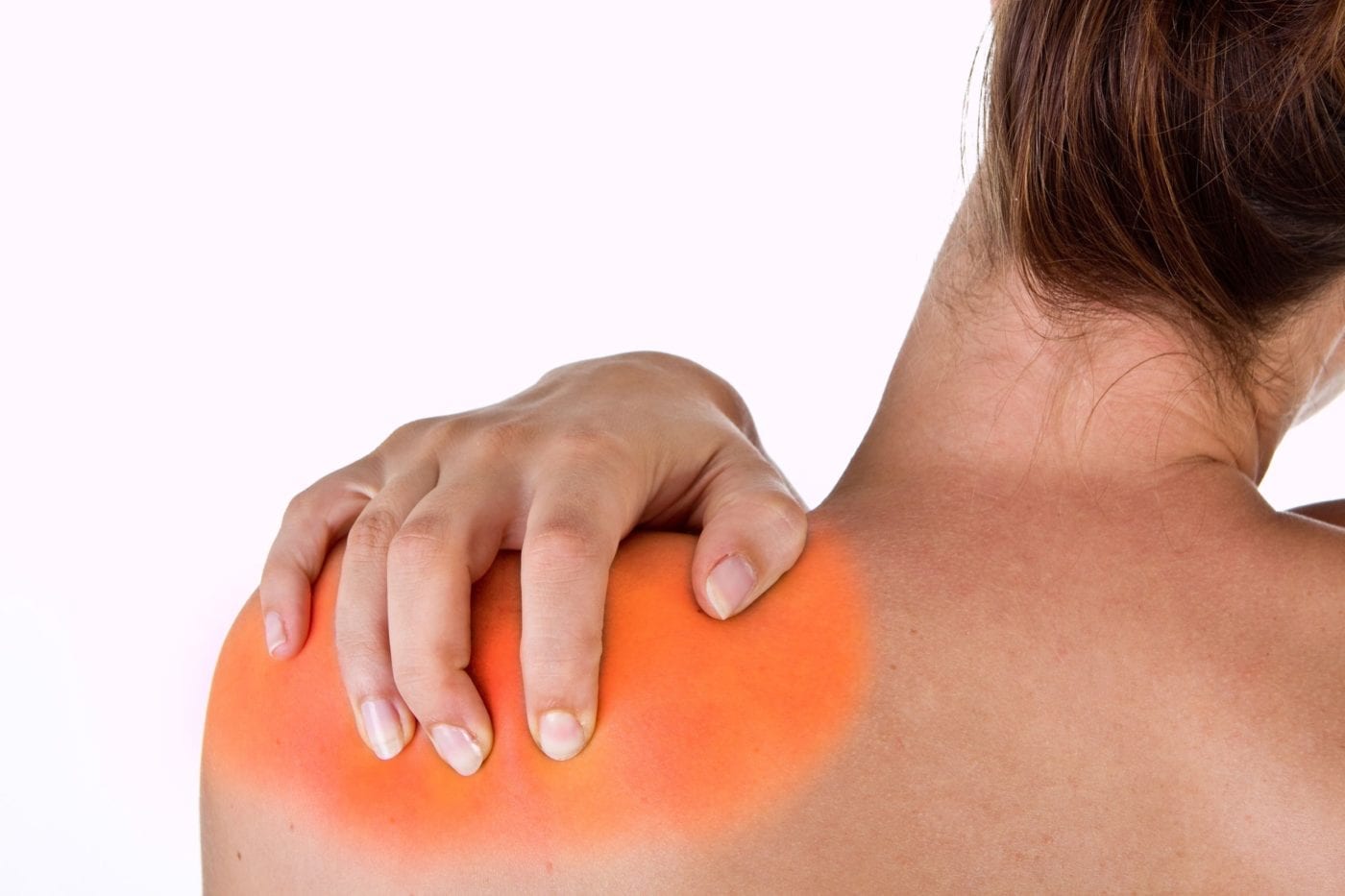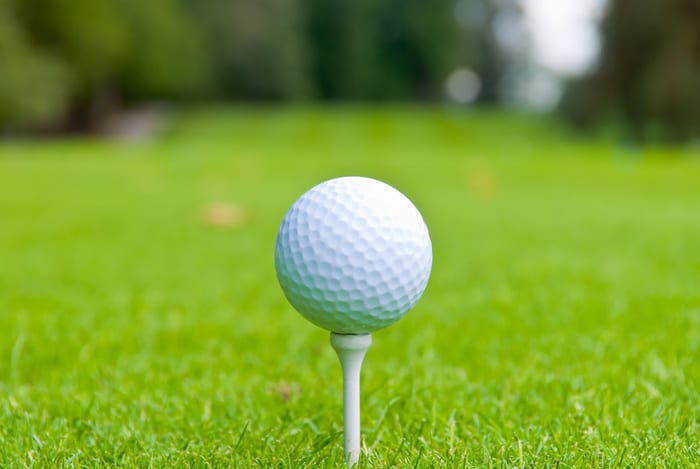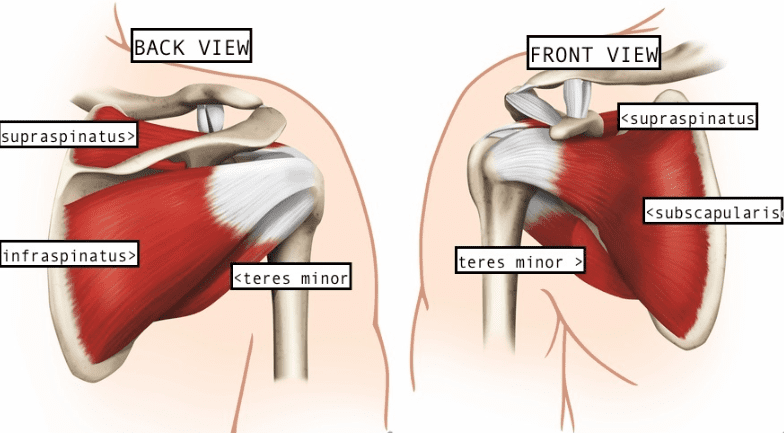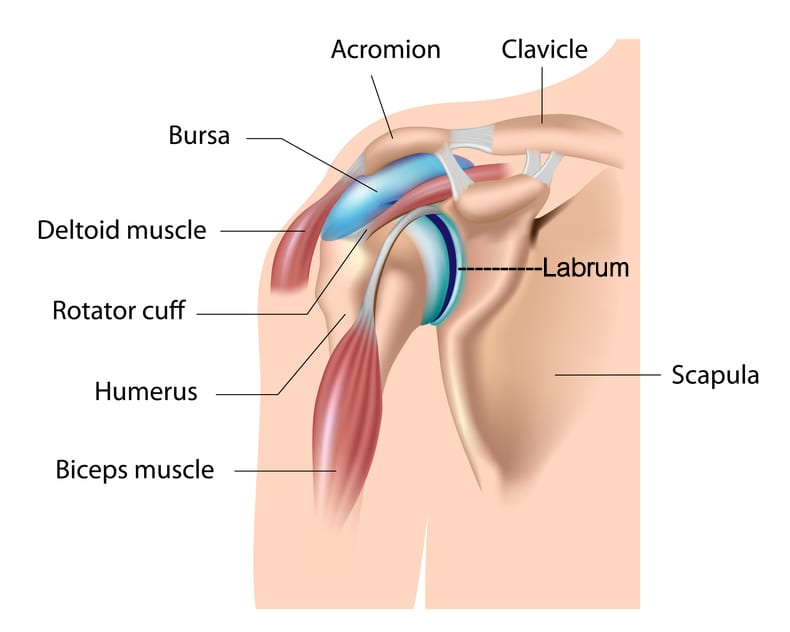The Shoulder Girdle
The Shoulder Girdle consists of three bones; the humerus, clavicle and scapula. Surrounding the end of bones is articular cartilage the allows smooth gliding movement and shock absorption.

The Glenohumeral Joint
The Glenohumeral Joint is called a ball and socket joint and is known to have the most mobility of any joint with the least stability. It’s often described as a golf ball sitting on a tee, in relation to the how much the humeral head sits on the glenoid cavity.

Ligaments
Ligaments are attached from bone to bone and provide support and stability. There are separate joints in the shoulder girdle including the acromioclavicular joint (AC), Sternoclavicular joint (SC) Scapulothoracic joint and Glenohumeral Joint (GH).

Tendons
Tendons attach muscle to bone. The most commonly affected tendon in an injury of the shoulder, are the rotator cuff tendons. The Rotator Cuff consists of 4 muscles; the supraspinatus, infraspinatus, teres minor and subscapularis. These muscles work together to allow external rotation and internal rotation of the shoulder.

The Bursae
The Bursae provides the shoulder protection. This small fluid filled sac allows smooth gliding of tendons.
The labrum
The labrum is a rim around the glenoid that keeps the humeral head in place and prevents dislocations.

